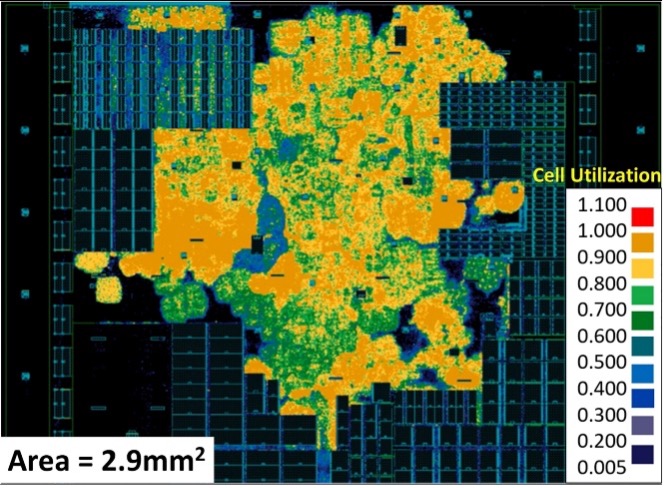
Intel's backside power delivery network (PDN) dubbed PowerVia is expected to be one of the main advantages of Intel's upcoming 18A and 20A process technologies. To learn how to implement it and demonstrate its advantages to parties interested in using Intel Foundry Services, the company implemented it in a test chip that is produced on its Intel 4 node, previously known as 7nm.
Intel's experimental chip with backside power delivery is based on unnamed energy-efficient 'E-cores' (we would speculate about Crestmont, though this is an educated guess at the moment) and is implemented on the Intel 4 process technology. Intel's findings, which will be revealed at the 2023 Symposium on VLSI Technology and Circuits, showed that Intel's PowerVia enabled an over 90% standard cell utilization in large portions of the core, while also providing a more than 5% clock speed improvement due to reduced IR drop. An image that Intel is set to demonstrate seems to prove the point, though it is impossible to evaluate how a similar core will behave in real-world workloads.
"Post-silicon debugging was successful, with slightly increased but still acceptable throughput times," a description of the presentation reads. "Moreover, the thermal properties of the PowerVia test chip were in line with the higher power densities anticipated from logic scaling."


Backside PDN aims to separate I/O and power wiring by relocating power rails to the backside of the chip, which helps address issues such as increased via resistances in the back-end-of-line (BEOL). This enhances transistor performance and reduces power consumption, while also eliminating potential interference between data and power connections. In addition, decoupling PDN and data wires contributes to area reduction, potentially leading to higher transistor density compared to existing production nodes.
For now, the only thing that Intel is set to demonstrate in mid-June is that its PowerVia PDN works and can improve frequency as a result of reducing IR. This leads to the conclusion that Intel's next-generation 18A and 20A process technologies will have at least one proven advantage over competing production nodes that will rely on traditional power delivery in the 2024 – 2025 timeframe.







